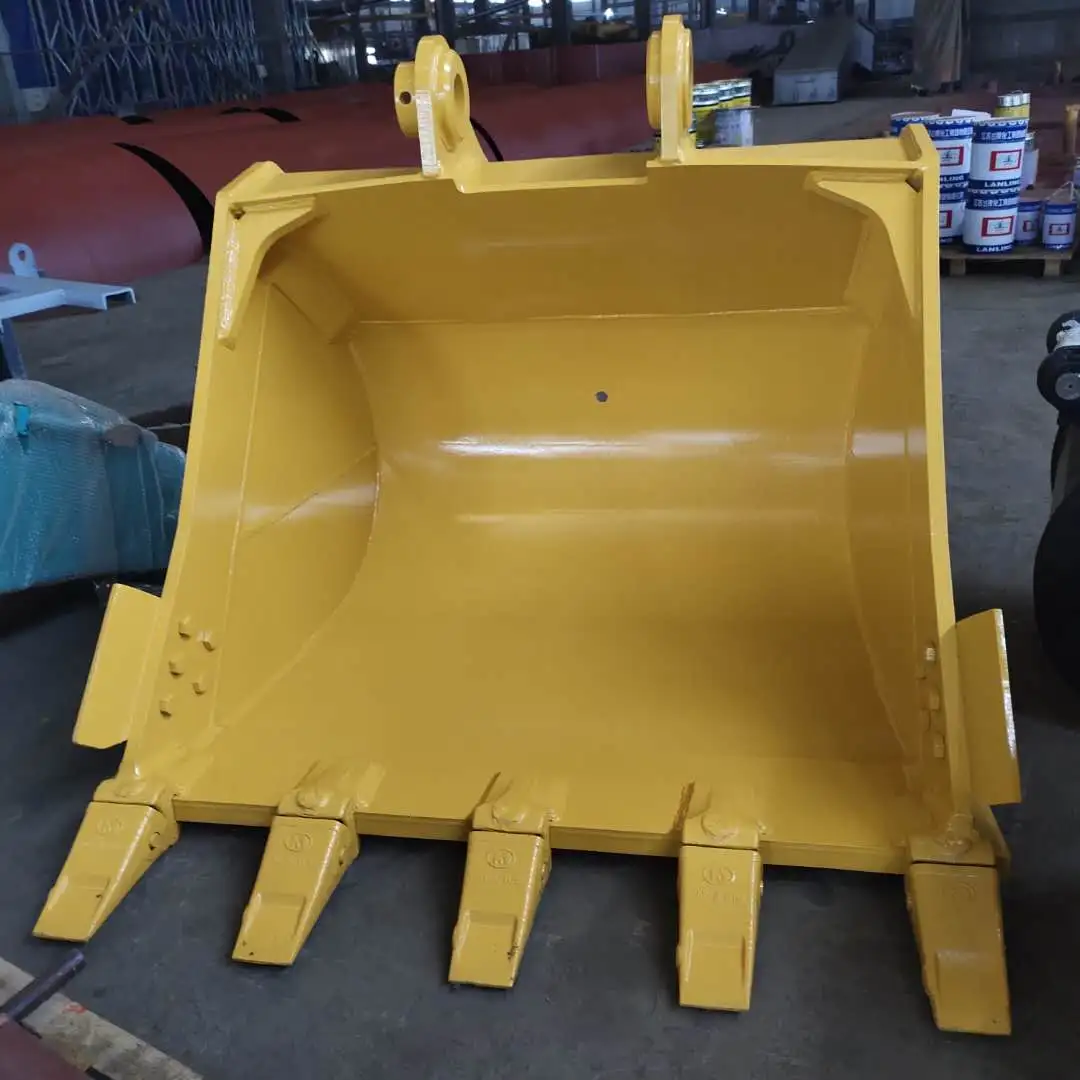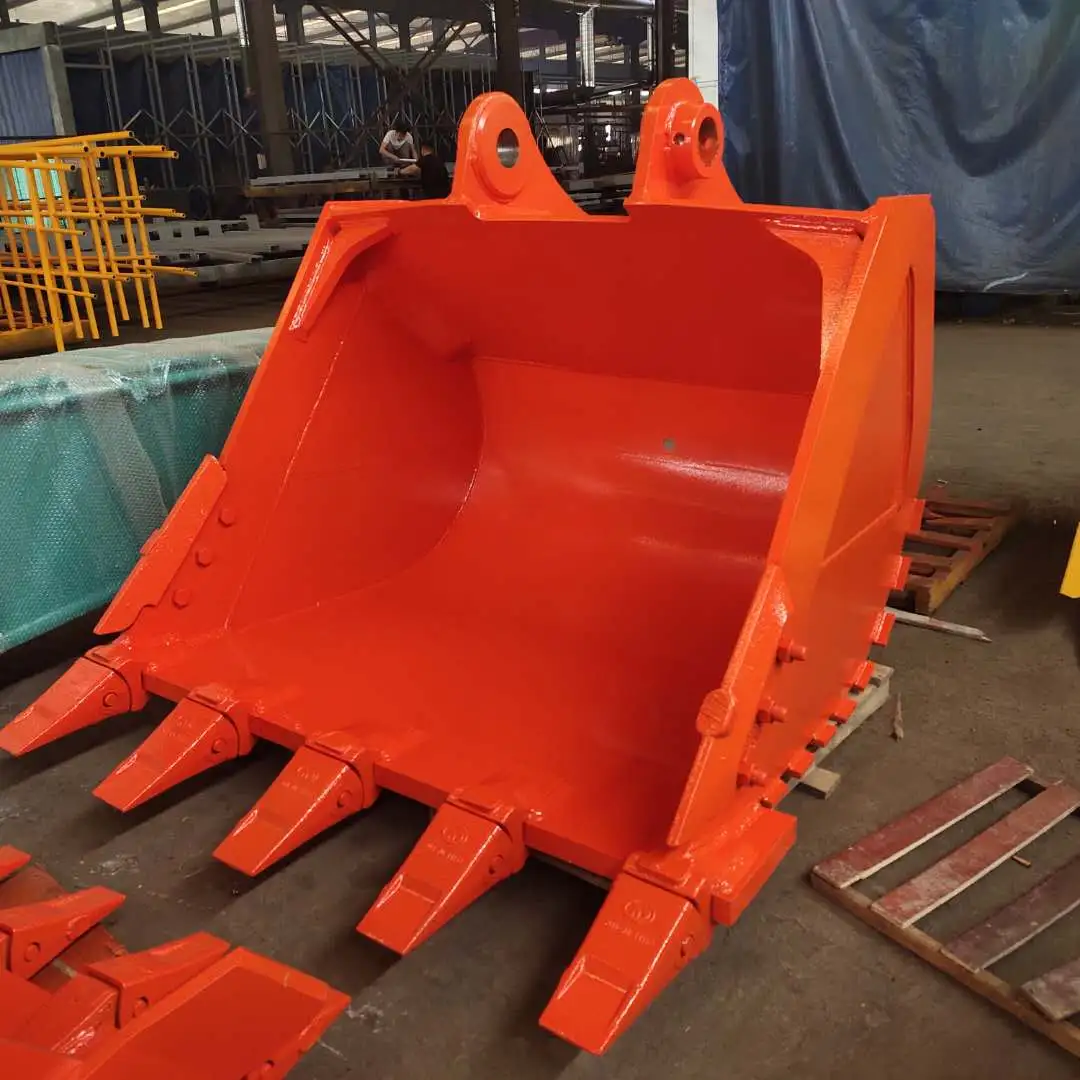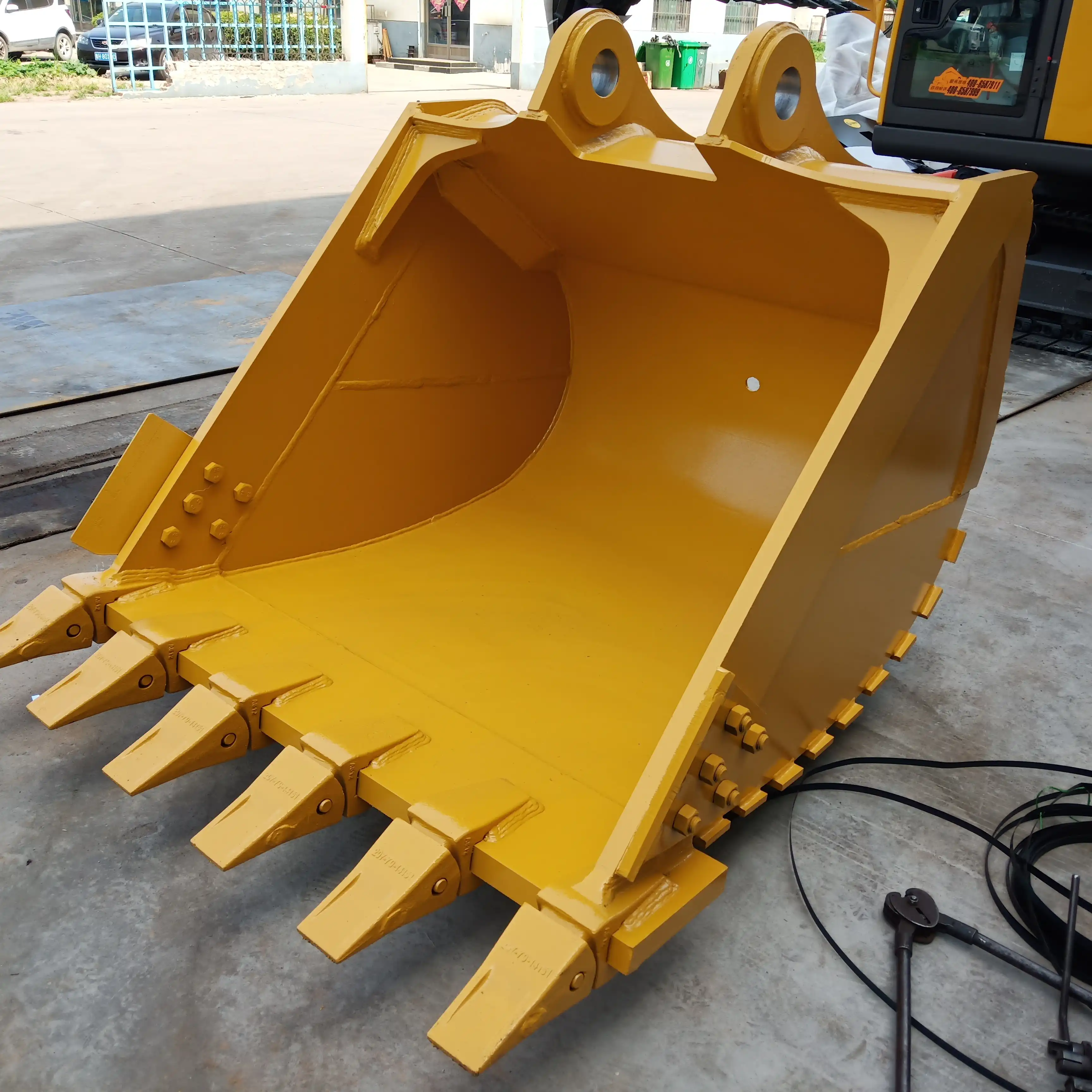What size is a standard bucket?
When it comes to excavation equipment, one of the most common questions industry professionals ask is: "What size is a standard bucket?" The truth is, there's no one-size-fits-all answer. Excavator buckets vary significantly in size depending on the machine they're paired with and the specific application requirements. Standard bucket sizes typically range from 0.1 to 5.0 cubic meters in capacity, with widths between 500mm and 2000mm. The "standard" size for any particular excavator depends primarily on the machine's operating weight and purpose. For instance, a 20-ton excavator commonly uses a bucket with approximately 1.0 cubic meter capacity, while smaller 5-ton machines might use a 0.3 cubic meter bucket. Understanding these variations is crucial for optimizing productivity and efficiency in construction, railway maintenance, mining, and other heavy-duty applications.
Capacity (Main Parameters)

Bucket Capacity Measurements
The capacity of a bucket is one of its most critical specifications. Measured in cubic meters or cubic yards, capacity indicates the maximum volume of material the bucket can hold in a single load. This measurement directly impacts productivity and efficiency on the job site.
When discussing bucket capacity, it's important to distinguish between two primary measurements:
Heaped capacity refers to the total volume when material is piled above the bucket's rim at a natural angle of repose. This is typically the capacity figure most manufacturers advertise, as it represents real-world lifting capabilities.
Struck capacity measures only the volume contained within the bucket's shell when filled level with its edges. This measurement is more conservative but provides a baseline for comparison.
For railway construction and maintenance operations, selecting the appropriate bucket capacity balances efficiency with precision. Too large a bucket may compromise accuracy in confined spaces, while too small a bucket reduces productivity and increases cycle times.
Excavator Bucket Size Chart
Bucket capacity correlates strongly with the size and power of the excavator. Industry standards have developed around typical pairings:
Mini excavators (1-6 tons): 0.1-0.3 cubic meters
Small excavators (7-10 tons): 0.25-0.6 cubic meters
Medium excavators (11-25 tons): 0.5-1.5 cubic meters
Large excavators (26-40 tons): 1.0-2.5 cubic meters
Heavy-duty excavators (40+ tons): 2.0-5.0 cubic meters
These ranges serve as starting points, though specific applications may require deviations from these norms. For instance, mining operations often utilize larger buckets for maximum material movement, while precision demolition work may require smaller buckets with greater control.
Capacity Optimization for Specific Applications
The optimal bucket capacity varies significantly based on the specific task and material being handled. Different industries have developed specialized capacity requirements:
For railway maintenance work, medium-sized buckets (0.5-1.2 cubic meters) offer the necessary balance between power and precision for tasks like ballast cleaning and track bed preparation.
Construction companies typically prefer versatile capacities between 0.8-2.0 cubic meters for general excavation, providing efficiency without overloading the machine's hydraulics.
Mining operations often push toward maximum capacity (3.0-5.0 cubic meters) to optimize material movement and reduce cycle times in high-volume extraction scenarios.
Landscaping and forestry applications generally utilize smaller capacities (0.2-0.6 cubic meters) for detailed work and compatibility with smaller machines that minimize ground disturbance.
Material density also plays a crucial role in capacity selection. Dense materials like wet clay or rock require smaller buckets to prevent overloading, while lighter materials like dry soil or sand allow for larger capacities.
Geometric Dimensions (Typical Parameters)

Width Specifications and Standards
The width of an excavator bucket attachments is a fundamental dimension that significantly impacts its functionality and application suitability. Standard bucket widths typically range from 500mm to 2000mm, with the most common sizes falling between 600mm and 1200mm for medium-sized excavators.
Width selection depends primarily on three factors:
Trench requirements: Utility trenches often require precise width specifications to accommodate pipes or cables. Common trench bucket widths include 450mm, 600mm, and 900mm.
Stability considerations: Wider buckets distribute force over a larger area, reducing ground pressure but potentially decreasing digging force. Narrower buckets concentrate force, enhancing penetration in hard materials.
Machine compatibility: The bucket width should typically not exceed the width of the excavator tracks or wheels to maintain stability and prevent damage to surrounding structures.
For railway maintenance equipment, standard bucket widths often align with track gauge specifications, with specialized buckets ranging from 800mm to 1435mm to match standard gauge requirements.
Depth and Height Dimensions
Beyond width, bucket depth and height measurements significantly influence performance characteristics:
Bucket depth (front-to-back measurement) typically ranges from 800mm to 1500mm for standard buckets. Deeper buckets increase capacity but may reduce maneuverability in tight spaces.
Bucket height (measured from the cutting edge to the top of the back plate) generally falls between 500mm and 1200mm. Taller buckets provide greater heaped capacity but may restrict visibility and increase material retention challenges.
The ratio between these dimensions creates different bucket profiles suited to specific tasks:
Deep, narrow buckets excel at digging trenches and precise excavation work. Wide, shallow buckets perform well for grading, leveling, and material spreading. Balanced dimensions provide versatility for general excavation tasks.
Standard geometric ratios have emerged in the industry, with typical depth-to-width ratios around 1.2:1 for general-purpose buckets and 1.5:1 for deep digging applications.
Attachment Point Measurements
The connection between the excavator bucket and the machine arm represents another critical dimensional consideration. These attachment points must adhere to standardized specifications to ensure compatibility:
Pin diameter specifications typically range from 30mm to 100mm, increasing with machine size.
Pin-to-pin distance (center-to-center measurement between mounting points) varies from 300mm to 800mm depending on the excavator class.
Link arm geometry must match the machine's design to maintain proper bucket angles throughout the digging cycle.
These attachment dimensions follow standardized patterns based on machine weight class, though proprietary systems exist among different manufacturers. Universal quick-couplers have grown in popularity, allowing operators to rapidly switch between bucket types while maintaining consistent attachment dimensions.
For specialized applications like demolition or railway maintenance, reinforced attachment points with larger pin diameters provide additional durability under high-stress conditions.
Factors Affecting Dimensions

Machine Size and Power Correlation
The size and power of an excavator directly influence the appropriate bucket dimensions. This relationship follows a fundamental principle of mechanical engineering: the machine must have sufficient hydraulic power, stability, and counterweight to operate the bucket effectively throughout its range of motion.
Several key correlations exist:
Operating weight ratio: As a general rule, bucket weight should not exceed 8-10% of the excavator's operating weight for optimal performance. Exceeding this ratio can strain hydraulic systems and compromise stability.
Hydraulic pressure limitations: Each machine has maximum hydraulic pressure capabilities that determine the force available for bucket operations. Oversized buckets may exceed these limitations, resulting in reduced performance and potential damage.
Lift capacity constraints: The excavator's boom and arm design establish maximum lift capacities at various reach distances. Bucket size must align with these specifications to prevent tipping or structural stress.
Industry standards have developed around these relationships, with manufacturers typically providing detailed compatibility charts for their equipment. For example, a 20-ton excavator typically pairs with buckets between 0.8-1.2 cubic meters, while a 30-ton machine can effectively handle 1.5-2.0 cubic meter buckets.
Material Density Considerations
The density of excavated materials significantly impacts bucket size selection. Denser materials require smaller buckets to prevent overloading and maintain operational efficiency.
Common material densities and their impact on bucket sizing:
Loose soil/sand (1,400-1,600 kg/m³): May allow use of larger buckets approaching machine maximum capacity.
Mixed soil/clay (1,700-2,000 kg/m³): Typically requires reduction to 80-90% of maximum bucket capacity.
Rock/compacted materials (2,200+ kg/m³): Often necessitates buckets at 60-75% of maximum capacity.
These density adjustments ensure the excavator operates within its design parameters while maintaining productivity. For railway construction and maintenance where ballast material (typically 1,800-2,000 kg/m³) is commonly handled, medium-capacity buckets provide the optimal balance.
Specialized bucket designs address density challenges through features like:
Reinforced wear plates for abrasive materials
Spill guards for loose, flowing materials
Rock rippers for dense, compacted surfaces
Skeleton buckets that allow fines to sift through while retaining larger objects
Application-Specific Modifications
Beyond standard dimensions, bucket designs often incorporate modifications tailored to specific applications and industries:
For railway maintenance, specialized buckets feature:
Angled edges for ballast profiling
Narrower widths for work between tracks
Reinforced structures for handling heavy rail components
Specialized teeth patterns for ballast penetration
In construction applications:
Grading buckets with smooth edges for finishing work
V-shaped ditching buckets for drainage applications
Trapezoidal buckets for slope cutting
Tilt buckets for working on uneven surfaces
Mining and demolition operations require:
Heavy-duty reinforcement for rock handling
Extra-thick wear plates and cutting edges
Specialized teeth configurations for material penetration
Rock guards to protect hydraulic components
These modifications often alter standard dimensions to optimize performance in specific contexts. For instance, a standard 1.0 cubic meter bucket might be modified to 0.8 cubic meters with reinforced sides for rock handling, or expanded to 1.2 cubic meters with extended side plates for light material handling.
The relationship between standard dimensions and application-specific modifications highlights the importance of consulting with specialists when selecting excavator buckets for specialized tasks like railway maintenance or construction in challenging environments.
FAQ
①What is the most common excavator bucket size?
The most common excavator bucket size varies by machine class. For mini excavators (1-6 tons), 0.1-0.25 cubic meters is typical. Medium excavators (10-25 tons) commonly use 0.5-1.2 cubic meter buckets. Large excavators (30+ tons) typically use 1.5-3.0 cubic meter buckets. For standard construction applications, a 20-ton excavator often uses a 1.0 cubic meter bucket as this provides versatility across most common tasks.
②How do I determine the right bucket size for my excavator?
To determine the right bucket size, consider your excavator's operating weight, hydraulic capacity, and the materials you'll be handling. As a general guideline, bucket weight should not exceed 8-10% of the machine's operating weight. Also consider material density, job requirements, and cycle time priorities. Consult your machine's specifications or contact a specialist for specific recommendations tailored to your needs.
③Can I use a larger bucket than recommended for my excavator?
While technically possible, using an oversized bucket is not recommended. Exceeding the recommended bucket size can cause hydraulic strain, reduce machine stability, accelerate wear on components, and potentially create unsafe operating conditions. The slight productivity gain is typically outweighed by increased maintenance costs and reduced equipment lifespan.
④How much does bucket size affect productivity?
Bucket size significantly impacts productivity, but bigger isn't always better. A properly sized bucket optimizes cycle times by balancing load capacity with digging efficiency. Studies show a well-matched bucket can improve productivity by 15-30% compared to an improperly sized one. However, oversized buckets can actually reduce productivity by increasing cycle times and causing unnecessary strain on the machine.
About Tiannuo
Understanding standard bucket sizes is essential for optimizing equipment performance and project efficiency. While there's no single "standard" size that fits all applications, industry norms have developed around machine classes and typical usage scenarios. The appropriate bucket size depends on a complex interplay of factors including excavator capacity, material density, application requirements, and productivity goals.
For railway construction and maintenance professionals, construction companies, and other heavy equipment operators, selecting the right bucket size represents a critical decision that impacts project timelines, fuel efficiency, and operational costs. The information presented in this guide provides a foundation for making informed decisions about bucket specifications.
Remember that bucket dimensions should always be considered within the context of your specific application requirements. While standard sizes offer a starting point, customization options allow for tailored solutions that maximize efficiency in specialized scenarios.
For expert advice on selecting the optimal excavator bucket for your specific needs or to explore custom options for challenging applications, we invite you to reach out to our team of specialists at arm@stnd-machinery.com. With years of experience manufacturing high-quality excavator attachments, Tiannuo Machinery can help you find the perfect match for your equipment and application requirements.
References
Construction Equipment Guide (2023). "Excavator Bucket Selection: Matching Size to Application."
International Journal of Mining and Heavy Industries (2024). "Standardization of Excavation Equipment Dimensions."
Association of Equipment Manufacturers (2023). "Hydraulic Excavator Bucket Capacity Standards."
Railway Maintenance Equipment Handbook (2024). "Specialized Excavator Attachments for Track Maintenance."
Journal of Construction Engineering and Management (2023). "Optimizing Excavator Performance Through Appropriate Bucket Selection."
About Author: Arm
Arm is a leading expert in the field of specialized construction and railway maintenance equipment, working at Tiannuo Company.

